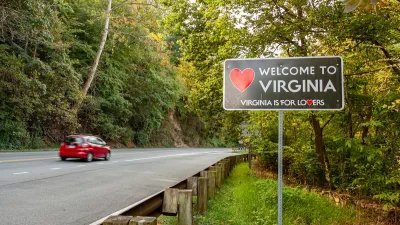In response to an eye-opening Atlantic Cities article about the lack of enforcement of traffic laws in NYC, especially as it contributes to pedestrian and cyclist injuries and deaths, four esteemed debaters offer opinions on how to improve safety.
The New York Times solicited four short essays on what Atlantic Cities reporter Sarah Goodyear advocates as the 'Broken Windows' approach to traffic safety, referring to the NYPD pioneered tactic of, "targeting petty 'quality of life' crimes such as public drinking, turnstile-jumping, and, perhaps most notoriously, squeegeeing."
For Goodyear, its application to traffic safety would require, "the NYPD to get out from behind their windshields and start systematically ticketing people who run red lights and rocket down residential streets and blow off stop signs. Catching the small stuff can change the culture and avoid the worst outcomes for everyone."
The four contributors are:
* Tracey L. Meares of Yale Law School writing "Taking Traffic Violations Seriously". Pointing to a successful program in Miami, she suggests that the NYPD consider the "Red Light/Green Light" program "which contained a substantial traffic enforcement component, in the most deadly areas of the city. Vehicular deaths plummeted."
* David V. Herlihy, author of "Bicycle: The History", writing "The Onus on Cyclists and Drivers". Historically he points out that "fatal accidents involving speeding urban cyclists would indeed mar the great bicycle boom of the 1890s."
* Tom Vanderbilt, author of "Traffic: Why we drive the way we do", writing "The Power of Being Pulled Over", also points to a successful program in Miami "that included decoy pedestrians, feedback flyers, written and verbal warnings, and saturation enforcement for a 2-week period" that NYPD should consider. Vanderbuilt also contrasts NYC's traffic law enforcement with its rigorous enforcement of its parking regulations.
*Peter Calthorpe, new urbanist land use planner, writing "It Starts with Better Design". Calthorpe writes "the more we design for cars, the less walkable, bikeable and enjoyable our streets become - and therefore the more we want to drive."
Thanks to Mark Boshnack
FULL STORY: Making Cities Safer for Cyclists and Pedestrians

Maui's Vacation Rental Debate Turns Ugly
Verbal attacks, misinformation campaigns and fistfights plague a high-stakes debate to convert thousands of vacation rentals into long-term housing.

Planetizen Federal Action Tracker
A weekly monitor of how Trump’s orders and actions are impacting planners and planning in America.

San Francisco Suspends Traffic Calming Amidst Record Deaths
Citing “a challenging fiscal landscape,” the city will cease the program on the heels of 42 traffic deaths, including 24 pedestrians.

Defunct Pittsburgh Power Plant to Become Residential Tower
A decommissioned steam heat plant will be redeveloped into almost 100 affordable housing units.

Trump Prompts Restructuring of Transportation Research Board in “Unprecedented Overreach”
The TRB has eliminated more than half of its committees including those focused on climate, equity, and cities.

Amtrak Rolls Out New Orleans to Alabama “Mardi Gras” Train
The new service will operate morning and evening departures between Mobile and New Orleans.
Urban Design for Planners 1: Software Tools
This six-course series explores essential urban design concepts using open source software and equips planners with the tools they need to participate fully in the urban design process.
Planning for Universal Design
Learn the tools for implementing Universal Design in planning regulations.
Heyer Gruel & Associates PA
JM Goldson LLC
Custer County Colorado
City of Camden Redevelopment Agency
City of Astoria
Transportation Research & Education Center (TREC) at Portland State University
Jefferson Parish Government
Camden Redevelopment Agency
City of Claremont





























